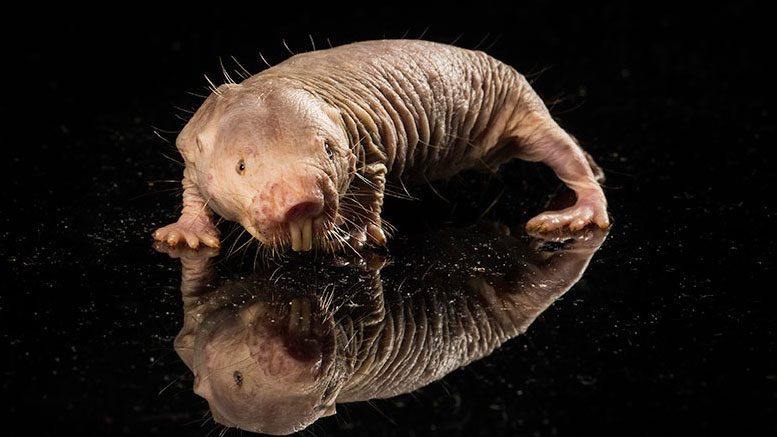Anti-Cancer Molecule Discovered in Unlikely Source

Is there any one word in the English language that is more feared than ‘cancer’? How many of you have heard that word? And how many of you that have heard that word first thought it was a death sentence?
According to the National Cancer Institute:
- In 2018, an estimated 1,735,350 new cases of cancer will be diagnosed in the United States and 609,640 people will die from the disease.
- The number of new cases of cancer (cancer incidence) is 439.2 per 100,000 men and women per year (based on 2011–2015 cases).
- The number of cancer deaths (cancer mortality) is 163.5 per 100,000 men and women per year (based on 2011–2015 deaths).
- Cancer mortality is higher among men than women (196.8 per 100,000 men and 139.6 per 100,000 women). When comparing groups based on race/ethnicity and sex, cancer mortality is highest in African American men (239.9 per 100,000) and lowest in Asian/Pacific Islander women (88.3 per 100,000).
Cancer isn’t a disease restricted just to humans. Many animals, domestic and wild develop cancer as well. When pet owners hear that the beloved furry member of their family has cancer, they are torn to very core of their hearts and face making a tough decision of spending many thousands of dollars to treat them or be merciful and end their suffering. A decision faced by many people about themselves as well and a decision that is highly emotional and controversial.
As researchers look for cures, they sometimes turn to a few animals that seem to have some sort of natural immunity to cancer, in hoped of learning their secret. For years, some researchers have been studying sharks, thinking that they never get cancer. Some research claim to have discovered the genes in sharks that make them immune from cancer, but then how true is the claim that sharks don’t get cancer?
In 2013, a great white shark off the shores of Australia was observed with a very large tumor growing from its lower jaw. In recent years, at least 23 different species of sharks have been found to have cancerous tumors, which man shatter the myth and hopes of sharks providing a miracle cure for the dreaded C word.
However, there is another creature that has captured the attention of some cancer researchers as they appear to be nearly immune to cancer and you’ll never guess what this creature is.
It’s a cold-blooded mammal that can go 18 minutes without oxygen. They don’t seem to age like most mammals and females remain fertile through their entire lives. They have exceptionally long lifespans, especially for their size. They only weigh an average of 1.2 ounces. They form highly sophisticated social groups, known as eusociality. The have cooperative brooding, form reproductive and non-reproductive groups, they divide labor and have overlapping generations within a large complex colony. They also seem to be immune to arthritis and heart disease.
Give up?
Have you ever heard of a naked mole-rat? These tiny burrowing animals are native to parts of East Africa and have been found to be nearly immune to cancer.
In studying them, scientist Vera Gorbunova of the University of Rochester identified a molecule in the naked mole-rat, known as high-molecular-weight hyaluronan, or HMW-HA, that seems to be responsible for their near immunity to cancer. How does this molecule work?
“Gorbunova notes that naked mole rat cells do not grow as densely as those of humans and mice do. The cells leave space between them rather than sitting tightly next to each other. This is significant because in tumors, cells tend to crowd quite a bit. By preventing this crowding, they believe the hyaluronan is creating this cancer resistance. She points out the barrier isn’t physical in nature; instead, it’s more of a signaling barrier wherein the hyaluronan tells the cell receptors to stop dividing.”
“In humans, hyaluronan is merely a structural component of tissue that degrades quickly. In naked mole rats, however, they have longer molecules and a lot of hyaluronan, and they upregulate it at very high levels. If humans could also upregulate it, Gorbunova believes we might derive the same anti-cancer benefits from it.”
“Studies are already underway examining how this finding could help people prevent cancer. It’s a very complex task, however. Simply injecting it where needed would be the easiest approach, but it’s far from practical in cancer, which can strike anywhere in the body. Her team is now working on creating small-molecule drugs that can slow the degradation of hyaluronan in people’s bodies so that their levels of it can be systemically raised.”
While this report says that a practical application to treating cancer humans is far from practical, that doesn’t mean it will be many years before it can be used as a treatment in humans. Cancer research is moving at amazing speed and one never knows when the next experiment will be the break through everyone is looking for. Now that they know about this molecule and how it works, that’s a lot more than they knew before and who knows, perhaps Gorbunova’s next study will reveal that breakthrough. Every piece of new knowledge offers renewed hope.








Recent Comments